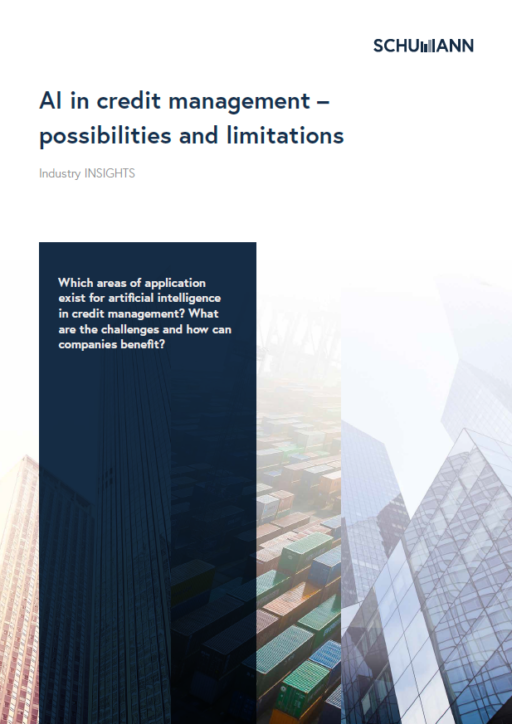Large data sets a prerequisite for AI and machine learning
If we analyse this theme a little more closely, we see that there are three main areas in which such solutions are successfully utilized, and these approaches are used to make automated decisions or prepare for them. What these areas have in common is that in all of them large amounts of data are available with which the solutions can be trained. Progress has especially been made in language and text processing, picture recognition and profile creation, classification, or personalization. We provide the necessary data to improve the solutions ourselves with our activities on the internet e.g., in social networks.
Things are certainly different in many areas of credit management, especially in B2B activities. Here, there are relatively few cases of insolvency compared with the number of healthy companies. This unbalanced nature of the available data hinders, for example, the training of decision-making, which often has to be performed using old cases.
AI in credit management: possible areas of use
- On the internet there is a lot of information, comments, and indications of the financial stability of companies. These can be automatically evaluated to find indicators for the economic situation of the respective company and searches can be performed. The frequency with which such messages occur, the so-called mood of the messages, the sentiment, or certain content (topics identified through topic mining) can provide warning signals. Various methods of text analysis can be used to help.
- Classical annual report analyses is primarily based on key figures, but this can now be supplemented by a textual analysis of the accompanying notes and possibly also of reports by other analysts. This may help in obtaining an even more accurate picture of the company's financial situation. We are investigating whether such approaches could potentially be successful.
- When creating an annual financial report prognosis such an analysis could also provide a contribution to increasing the quality of the predictions.
- If there are "ToDo" lists for the credit management staff, the order in which the employees work on the tasks can be used to train systems to determine the importance of handling new cases based on particular criteria and then automatically perform the relevant tasks or present them to the credit decision-makers in the correct order.
- A further area of application is making predictions about when receivables will be paid. Forecasts about the future are made using data from the past and similar customer patterns.
- Systems can also be complemented with so-called chatbots, which could offer verbal information relating to particular decisions, for example. This would reduce the workload for the staff. Chatbots also use methods of artificial intelligence.
- Large volumes of data can also be found in the field of debt collection, especially when it relates to debts of private customers. Here, previous cases can be used as a basis for training systems which then suggest potentially successful individual collection strategies based on the profile of the debtor. In this area it is often possible to achieve benefits quickly.
- Similarly, factoring companies, which purchase receivables and then make decisions about them individually, could train systems suitably.
What we should not forget is that solutions using systems of rules to represent the decision-making behaviour of credit managers have been around for a long time. This is nothing new.
The limits of automatic learning
How is it with automatic learning by systems? Wrong decisions are made – whereby the realization that it was a mistake mostly occurs long after the decision or a system suggestion is overruled by a human operator. In the first case, when all the data has been collected for a larger number of such cases the system could be (periodically) retrained. In the second case, one must critically consider whether the human decision maker had information available that was not recorded in the system. If this is the case, retraining makes no sense. Such decisions need to be made individually.
The training of these systems is also not easy. A suitable data basis must be identified and prepared. Training and test data must be separated. A suitable AI method must be selected and the parameters for this method set up over many training cycles so that ultimately the most suitable approach can be found. The effort required should not be underestimated. And finally, such solutions also require maintenance - they do not maintain themselves. Failures will certainly happen.
Outlook
Immediate fundamental changes in credit management through AI are therefore unlikely to take place. But changes in small steps and thus improved decisions in some areas are certainly possible.
AI in Credit Management – Opportunities and Limitations
